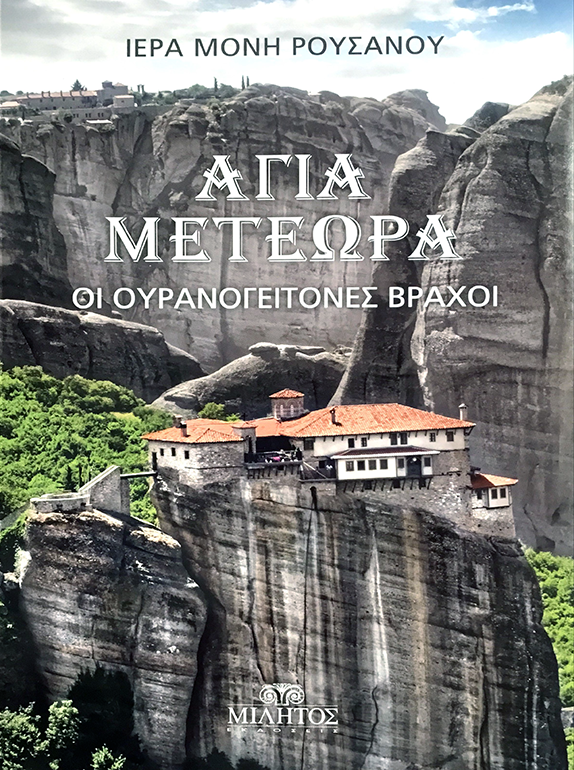Roussanou Monastery
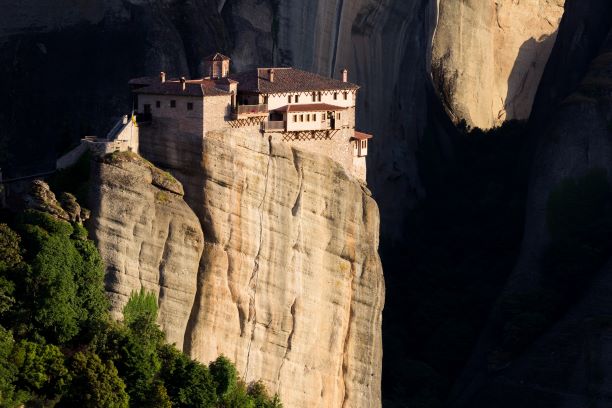
Dedicated to St Barbara
Roussanou Monastery, which is dedicated to St Barbara, is situated next to the western road that leads from Kalabaka and Kastraki to the monasteries. The monastery was built on a vertical pillar that is sixty metres high, and 484 metres above sea level. The entire surface (500 m2) of the top of the pillar is covered by the monastery buildings, which are built in such a manner that the various natural and man-made elements blend into one harmonious whole.
The monastery lies within the ‘rocky forest’ of Meteora with its holy monasteries. Opposite, towards the north, lies the monastery of Varlaam, while behind it lies the monastery of Great Meteoron. To the northwest is the monastery of St Nicholas Anapausas, and to the southeast the monasteries of the Holy Trinity and of St Stephen.
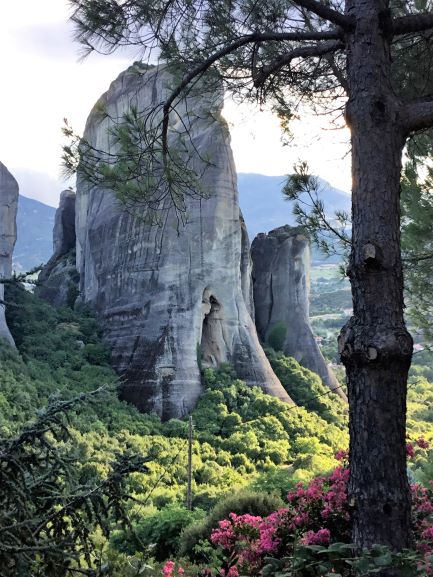 From the north terrace of Roussanou the visitor can see the ruins of the monasteries of Pantokrator, St John the Baptist and Agia Moni. To the south there is an enormous pillar, known as Stylos Stagon, on which the Prison of the Monks lies. The pillars of Koumaries, Palaiokranies and Lianomodia also lie to the South, as well as the ruins of the monydria (small monasteries) of St Eustratios and Taxiarchon. The Cell of St Paul, the precise location of which is unknown, and the monydrion of Kallistratou once stood nearby. To the East towers the pillar of Psaropetra with its amazing view of the whole landscape of Meteora.
From the north terrace of Roussanou the visitor can see the ruins of the monasteries of Pantokrator, St John the Baptist and Agia Moni. To the south there is an enormous pillar, known as Stylos Stagon, on which the Prison of the Monks lies. The pillars of Koumaries, Palaiokranies and Lianomodia also lie to the South, as well as the ruins of the monydria (small monasteries) of St Eustratios and Taxiarchon. The Cell of St Paul, the precise location of which is unknown, and the monydrion of Kallistratou once stood nearby. To the East towers the pillar of Psaropetra with its amazing view of the whole landscape of Meteora.
The name Roussanou
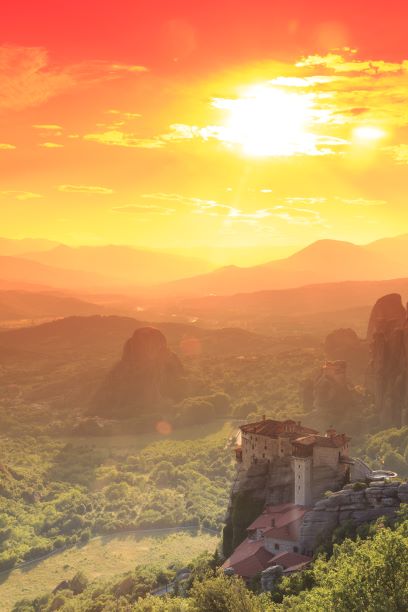 It is not known why the monastery is called Roussanou. It may have been named after the first monk to live here or the founder of the first church, which dates from the 13th or 14th century.
It is not known why the monastery is called Roussanou. It may have been named after the first monk to live here or the founder of the first church, which dates from the 13th or 14th century.
The first written record of the name Roussanou can be found in the well-known ‘_Historical letter_’ or ‘Chronicle of Meteora,’ compiled shortly after August 1529, where it is recorded that ‘the monastery of Roussanou’ had been ‘*deserted of residents*’ until a few years previously.
The name Roussanou also appears in official documents of the 1530s, indicating that it had been in common use before this. When the two brothers and hieromonks Joasaph and Maximos settled on the pillar sometime between the years 1527 and 1529, it was already known as the ‘rock of Roussanou’.
It has also been claimed that the name Roussanou derives from a corruption of the name Arsenios (Arseniou, giving t’Arsanou—of or belonging to Arsenios—followed by Roussanou). However, the first reference in written sources to the hieromonk Arsenios, who was also abbot of the monastery, dates from 1560, whereas the name Roussanou appears to be older.
The name Roussanou may originate from the word roussos (Latin russus=red; cf. Italian rosso) meaning reddish or russet. The name may derive from the reddish colours of the rock itself, especially when viewed from certain angles during the day. The etymology of the word Roussanos, either as forename or as surname, also derives from the same word, roussos.
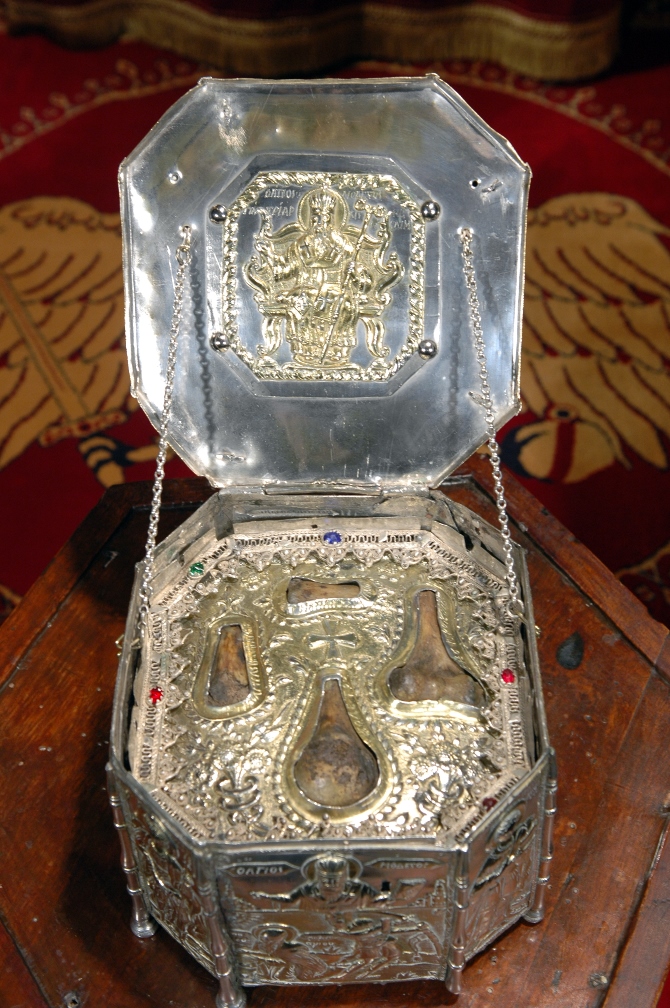
At some point the monastery came to be named after St Barbara, the great third-century martyr. What we do know is that the monastery acquired some relics (a piece of skull) of St Barbara in 1744-45, and it is likely that the monastery was named after the martyr from this point onwards. The monastery also acquired an old and small miraculous icon of the great martyr.

Note: More information can be found in the book: Vlioras Spyridon, Holy Meteora - The rocks that neighbour heaven, trans. Caroline Makropoulos, ed. Militos, Athens 2017, σελ. 178, ISBN: 978-960-464-925-9.
